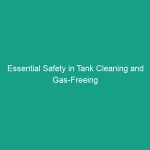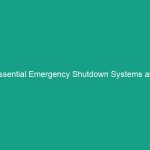Good Morning Team!
Today, we’re going to discuss an important topic that affects each one of us in our workplace: Essential Spill Prevention Guidelines. Understanding and adhering to these guidelines is crucial for maintaining a safe working Environment and avoiding hazardous situations.
Understanding Essential Spill Prevention Guidelines
So, what exactly are essential spill prevention guidelines? In simple terms, these guidelines are practices and Procedures that help prevent spills of hazardous materials, which can pose serious risks to our health, the environment, and the integrity of our workplace.
Spills can lead to significant clean-up costs, legal ramifications, and can affect our productivity. Moreover, spills can result in injuries and health risks for employees. It’s essential to understand that spill prevention is not just a regulatory requirement; it’s a vital aspect of our commitment to Safety.
Key Hazards, Risks, and Safety Considerations
When it comes to spill prevention, there are several key Hazards and risks that we need to be aware of:
- Chemical Exposure: Many materials we handle are toxic and can cause serious health issues if spilled.
- Environmental Impact: Spills can contaminate soil and water, leading to long-term ecological damage.
- Fire Hazards: Some materials are flammable; a spill can lead to dangerous fire situations.
- Financial Costs: Cleanup operations, fines, and loss of productivity can be extremely costly.
Ignoring spill prevention protocols can lead to severe consequences. For instance, a minor spill can escalate into a major incident if not addressed promptly, leading to workplace injuries and regulatory penalties. It’s essential that we take spill prevention seriously.
Best Practices, Procedures, & Actionable Advice
Here are some Best Practices that you can implement immediately to enhance spill prevention in our workplace:
- Regular Training: Attend and participate in regular spill prevention training sessions. This keeps everyone informed of the latest practices and procedures.
- Proper Storage: Always store hazardous materials in designated containers that are appropriate for the substance. Ensure that all containers are labeled correctly.
- Routine Inspections: Conduct regular inspections of storage areas to identify leaks or spills promptly. Report any issues immediately.
- Use of Spill Kits: Ensure spill kits are readily available and employees know their locations. Check kits regularly for supplies and expiration dates.
- Immediate Clean-Up: In the event of a spill, follow the established procedures for clean-up immediately to prevent further risks.
For example, a recent incident in a warehouse involved a small spill of a cleaning solvent. The team quickly followed the spill response protocol, using the spill kit effectively, which minimized exposure and prevented a larger issue.
Regulations, Standards, and Compliance
It’s important to understand that spill prevention is not just a matter of Workplace Safety; it’s also governed by Regulations. Compliance with Standards such as OSHA (Occupational Safety and Health Administration) and other relevant local and international safety regulations is essential. These regulations are in place to protect you, your coworkers, and the environment.
Failure to comply can lead to significant fines and legal repercussions for both employees and the company. Understanding these regulations and how they apply to your day-to-day operations is critical.
Employee Engagement & Discussion
Now, I want to hear from you! What safety challenges have you encountered related to spill prevention? Have you ever had to deal with a spill? What did you learn from that experience? Your insights are invaluable in enhancing our safety protocols.
Let’s take a moment to discuss how we can improve our spill prevention practices. What suggestions do you have? Are there specific areas where you feel we could do better?
Conclusion & Key Takeaways
In summary, preventing spills is a shared responsibility that requires vigilance, proper training, and adherence to established guidelines. Remember the following key points:
- Stay informed about spill prevention practices.
- Report spills immediately and follow clean-up procedures.
- Participate in training and safety discussions actively.
- Ensure compliance with relevant safety regulations.
By prioritizing safety and implementing these essential spill prevention guidelines, we can create a safer workplace for everyone. Thank you for your attention and commitment to safety. Let’s work together to avoid these critical risks!


